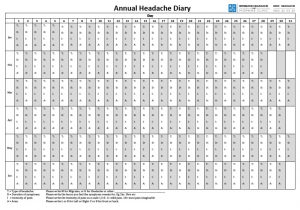What are common triggers?
Environmental Factors
Diet – Lack of food or missing a meal can contribute to a migraine attack due to low blood sugar levels. For some people, craving sugary snacks may be a sign that they are about to experience a migraine or headache episode. Certain food additives including monosodium glutamate, nitrates and aspartame are known to contribute to migraine or headache symptoms in some.
Weather – high altitude, changes in temperature, high humidity and glary sky/sun can be triggering for some people. This is often the case for people who suffer from visual disturbances or aura.
Caffeine – excessive consumption of caffeine can also be a trigger, but some people find that cutting down the amount of caffeine consumed rapidly can also contribute to symptoms. Another contributor is dehydration, which is aided by caffeine consumption, so this can be prevented by monitoring water consumption.
Alcohol – Tyramine is found in red wine and certain soft cheeses, and is said to be a known substance that contributes to migraines.
Social Factors
Social factors can be some of the strongest triggers for headache and migraine symptoms.
Stress – High levels of stress and tension, or even excitement can contribute to a migraine attack. Alternatively, some people experience what are known as “weekend” headaches, when their level of stress significantly reduces and they are more relaxed.
Sleep – Disturbed sleep or inconsistent regular sleeping patterns may lead to symptoms and an attack. Lack of sleep increases the likelihood of an attack occurring in most migraine and headache sufferers.
Exercise – Exercise can be both a trigger and a treatment for migraines and headaches. Over-exertion or rapid change in the amount of exercise can be triggering, where as regular exercise can help to relieve and prevent symptoms from occurring.
Physical Factors
Head injury – The occurrence of serious head injuries is low, however there will often be subsequent symptoms such as chronic headache/neck pain that may affect those with even minor head injuries.
Muscle Tension – Muscle tension often associated with stress, but tense muscles in the neck, shoulder and upper back can contribute to over-sensitisation and thus headache symptoms.
Coughing – Repeated coughing may be a trigger for some people, although it is unknown why. This may be the case if you only commonly experience a migraine or headache after being sick or recovering from a cough.
Teeth Grinding – This is one trigger that has a simple solution, it often occurs at night time, so referral to a dentist or orthodontist to make an occlusal splint can be the simple fix to teeth grinding related headaches.
The above triggers are just examples of the common triggers, but they can vary wide and far for many migraine and headache sufferers.
How can you identify your triggers?
The recommended method for identifying and avoiding triggers is by keeping a headache diary, and noting down possible causes/triggers for your headache or migraine. This also helps to track the severity, frequency and duration of attacks which can be beneficial in directing treatment and assessing your progression.
Below is an example of what an annual headache diary looks like, however they can vary in size to allow for different levels of detail. Templates for headache diaries can be found online, so they are easy to access for any headache or migraine sufferers.

Headache Diary
If you are a sufferer or know someone who suffers with headaches or migraines, give us a call today to book in an initial appointment so that we can help you identify your triggers and improve your condition!
1800 HEADACHE or [email protected]
Imagine a life free from headaches and migraines!







